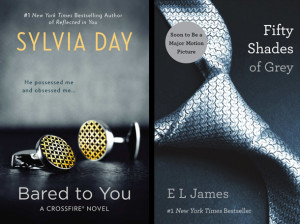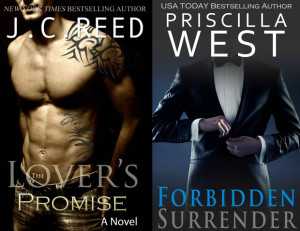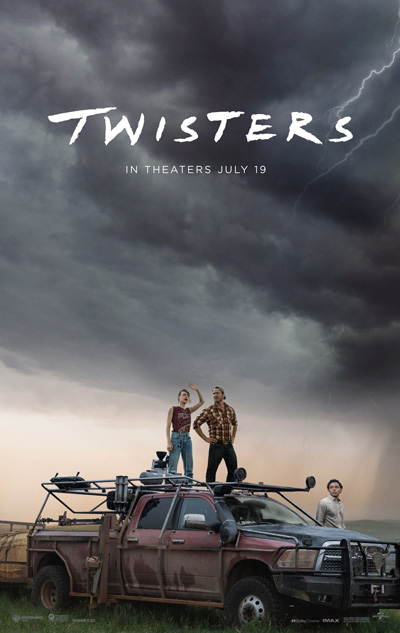
TWISTERS brings storm chasing back to the big screen.
My road through publishing has been twisted since Funnel Vision, Tornado Pinball and Zap Bang. How can writers choose their happiest path?
The release of Twisters this summer has me thinking a lot about fictional accounts of storm chasing—and my own writing.
I’m a storm chaser, and I took the movie for what it was: big-budget entertainment. The film’s science stretches credulity, and the actions of the storm chasers seem unlikely at best, but it’s always fun to watch Hollywood’s take on your life’s passion. The tornadoes looked better than they did in Twister, and I appreciated the inside references to our hobby and the original movie. Yet I think I’ll always have a special place in my heart for the geeks of Twister.
When I wrote my novels about storm chasers, the books’ quirky, obsessed characters were at least as important to me as the action. I’ve felt a need to revisit the books given all of the chaser stuff appearing in media lately.
Everything I write means something to me, but these “books of my heart” still give me a thrill. They remind me there’s value, perhaps the ultimate value, in writing about something you love.
TWISTER, chasing and writing
I saw Twister before I ever went chasing, though I’d seen scientific storm chasers in documentaries and had a lifetime fascination with tornadoes. So Twister didn’t push me into storm chasing, but it reinforced my curiosity.
A random Internet search got me into Plains chasing for the first time when I discovered Cloud 9 Tours back in 1997. That experience sparked a lifelong love of storm chasing, led to hundreds of thousands of miles on the road, and fueled my photography and imagination, including my writing.
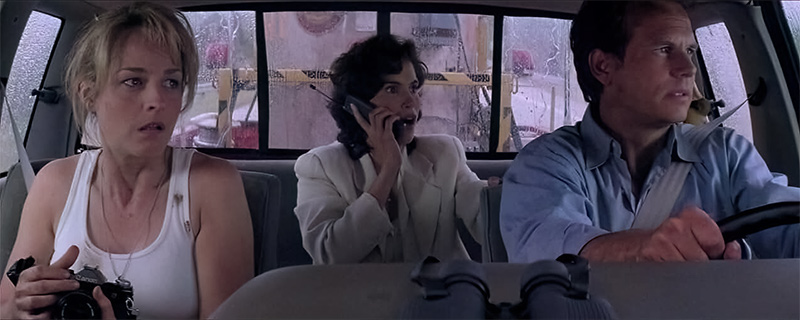
“We got cows!” Who can forget this scene from TWISTER with Helen Hunt, Jami Gertz and Bill Paxton?
Chasing is seasonal, so it was never my job. For years, I worked in newspapers and occasionally toiled in fiction on the side. Like most writers, I suffered rejections that discouraged me for way too long. But my immersion into chasing culture compelled me to write a novel—which became more novels—about storm chasers.
That first novel was influenced by a lot of factors: my passion for chasing, obviously. What I learned in creative writing classes in college, which had a strong literary bias. And a compulsion to get inside these characters’ heads.
First novels sometimes come with baggage as writers find their way. Funnel Vision wasn’t my first novel (my unpublished novels likely will remain so), but it became the first I published and then the first in a series. If I wrote it today, it would probably be very different. I’ve since learned that if you think you might write a series, start as you mean to continue. Conceptualize. Plan. Write more than one book before you publish. Plot a few books out, even if you don’t nail all the details.
Funnel Vision has several storm-chasing action sequences, including a page-turning chase that takes up most of the last third of the novel. But there’s also lyrical scene-setting and serious stuff, including a shock and a lot of emotion—it is, shall we say, a little more literary than books two and three. As in the other books, there are romantic elements, with a couple of steamy scenes, though it’s not a romance, either.
Judy, the heroine of the first novel, is a photographer who chases for art and therapy after surviving a tornado that hit her town when she was a child. The main male character, tornado researcher Jack, is obsessive and impulsive, and it takes him three books to figure out his life. They’re part of an ensemble cast.
Funnel Vision is wildly cross-genre. And cross-genre books are really hard to market.
Ignoring conventional genres was just one of the “mistakes” I made when I decided to self-publish, but I was a newbie at indie publishing. I didn’t know that books that fit neatly into a category sold better. Or that those books should have clearly defined genre covers that looked a lot like other books in their category. (I changed the covers later.)
And I didn’t realize that action-adventure wasn’t a very popular category to begin with. These days, there are a lot of erotic romance books with weird AI covers polluting the category on Amazon. (I have no problem with erotic books with AI covers, but they shouldn’t be in action-adventure. I know. I digress.)
Truthfully? I didn’t care about writing to market, even though I tried to find the right niche for the books. I have a passion for these stories, and I wanted to write them regardless of their marketability.
After a bunch of agent rejections for Funnel Vision, a fallow period after my mother’s death, and the rise of indie publishing, I revised it one more time and launched it into the world in 2012. Indie publishing experts fondly refer to this era as The Gold Rush. It wasn’t golden for me, as I published one book a year for three years and didn’t sell all that many. But it was satisfying to have the books out there—and a bit terrifying as well.
A second look, ten years later
The books became a series, and they evolved. Sometimes I think Funnel Vision is almost a prequel, for the reasons cited earlier, though any of the books can be read on their own. Tornado Pinball and Zap Bang continue the stories of Jack and some of the other characters, and they are assuredly adventure novels, though they still have characters with issues and a few steamy scenes and an often humorous, satirical bent.
They also have driving plots that would totally work as a movie. In Tornado Pinball, my hero acts as a consultant to a TV crew trying to launch a human tornado probe as a rival chaser complicates their quest. In Zap Bang, he and a badass pilot—a woman and war veteran—are drawn into a dangerous lightning study even as they’re drawn to each other.
And since I’ve been thinking about fiction starring storm chasers and my own books, I just did something I’ve been longing to do for a while—another read of these novels, with a light edit. I was relieved to find that I still love them.
Why a light edit, and what does that mean?
A little history: I started my newspaper career as a copy editor. (Or as some style guides would have it now, copyeditor.) I transitioned into reporting. And when I wrote the books, I was still working in AP Style. I learned best practices for fiction that served me well when I left newspapers and eventually began editing books as my day job.
Now I use Chicago Manual of Style (with a few quirks—that’s a privilege of indie publishing) and Merriam-Webster’s online dictionary as my standards. So the light edit ensured the books meet current standards. I polished a sentence here and there, but I refrained from a rewrite. And I tweaked a few of the outdated tech and other references that might’ve pulled readers out of the story, without changing the plot or timeline.
As I say in the notes at the back of Funnel Vision, it will always be a product of its time. But a few subtle changes make it more timeless. At least for the next few years! If you download the Storm Seekers Series ebooks or order the paperbacks, you’ll get the most up-to-date versions.
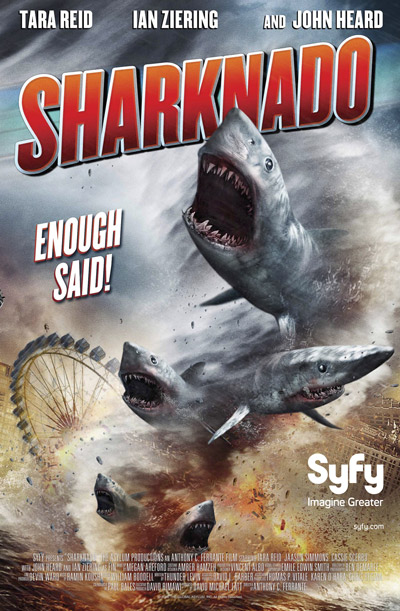
The silly SHARKNADO franchise took tornado movies to the ultimate extreme.
Authenticity in writing (and marketing)
There’s been a lot of tornado-rich fiction on big and small screens—and some in books—in the years since Twister, from the cheesy awesomeness of the Sharknado franchise and other bad TV movies to more earnest attempts like Supercell. (Which has a character named Zane, as do I. Huh.)
It’s hard for storytellers to resist the eternal conflict of human vs. nature, ramped up to F5 levels (or EF5, for the weather geeks). The sometimes ludicrous scripts of disaster movies probably shape what readers expect of books with storms in them. But I appreciate stories that get at least some of it right.
I think readers who loved Twisters might enjoy novels written by an actual storm chaser. Of course they’re fiction. The characters are fictional. The research projects and TV stunts are fictional. But the stories are authentic.
I’ve been thinking a lot about authenticity, which has become kind of a buzzword in marketing that often translates to “go on social media and show the real you.” Which is hard if you’re a private person. I think authenticity means a lot of things—not just an authentic presence but, in writing, authentic details and emotions and, especially, an authentic voice.
I am my writing. But my writing is several different things, and I like writing in multiple genres.
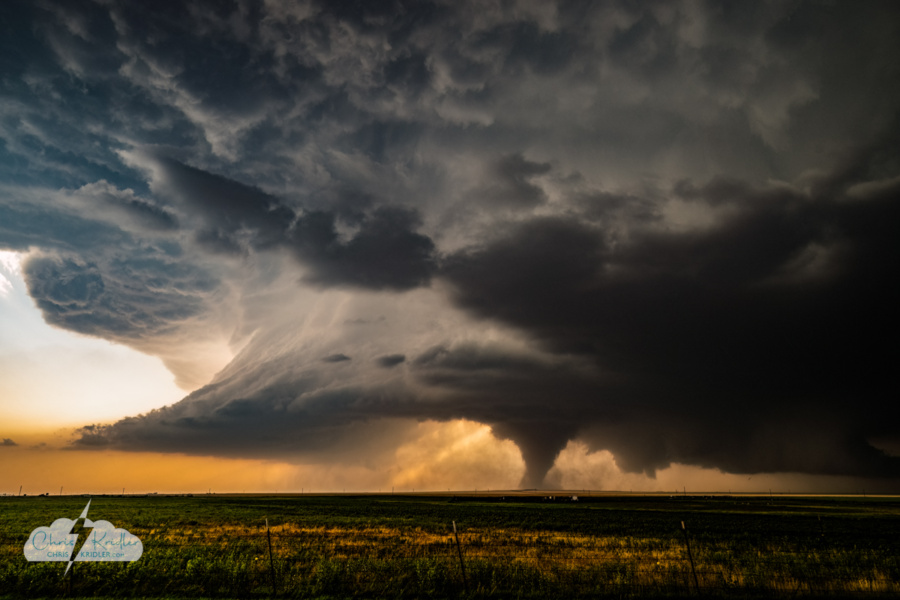
It doesn’t get more authentic than this: a tornado I chased on May 23 in Oklahoma with friends.
In a New York Times interview, mega-bestseller Colleen Hoover, who writes in several genres and has a massive TikTok following, said, “I kept being told that authors need to brand themselves as one thing. And I was like, well, why can’t I brand myself as everything? Why can’t I just brand myself as Colleen Hoover?”
I don’t expect to get anywhere near her sales level, but I like the way she thinks.
I’ve been writing mysteries under a pen name, Lucy Lakestone, which I kept on the down-low for a while, partly because Lucy’s first series was steamy romance. I wasn’t sure people who knew Chris Kridler the Journalist/Storm Chaser were ready for that. Eventually I realized that hardly anyone cares.
Then I (well, Lucy) started the Bohemia Bartenders Mysteries, which are funny mysteries I call quasi-cozy. What does that mean? Cozy mysteries are usually set in a closed environment like a small town; my bartenders travel. Cozies tend to be tame, curse-free, with violence off the page and no sex. My mysteries teeter right on the edge of the category. They have occasional cursing, they hint at heat but don’t show anything explicit on the page, and there’s always action and danger. So calling them “quasi-cozy” in every book description is my way of saying, hey, these defy genre expectations, and you’ve been warned.
You’d think I would’ve learned my lesson with the storm chasing books when it comes to writing to market and fitting into a genre. But life is short, and while I want to make a living, I also want to write books that mean a lot to me, pigeonholes be damned. I know some people do both. I’m working on it. But with my time getting shorter, I’m committed to writing authentic stories I care about.
Writing is hard. And publishing can be brutal. I have friends who are killing it. Others are struggling to break even, break out. The quality of a book doesn’t necessarily determine its success in a flooded market.
I have a long way to go before I declare myself a success. The big question is, what is success to you? And is the struggle worth it? If I’m going to work this hard at the dream, I want to love what I write.
If you care about what you write, your passion will show through, as long as your skills match your enthusiasm. While it helps to write something you love that also fits into a marketable category, I hope your joy comes first.
“If you’re just chasing the algorithm,” Mal Cooper of The Writing Wives said in a recent video, “… you’re losing your authenticity and you’re just shifting toward the mean. You’re making the most average thing that you can. That’s what the algorithm is looking for, right? It’s looking for the most average thing that’s going to appeal to the largest group of people, and you’re going to sacrifice your authenticity when you do that. So that thing that actually makes you unique and interesting and have a draw is the very thing you get rid of when you chase the algorithm. So that’s why I’m not a fan of doing that. I’m a fan of being out there and honest and real about yourself and your stories and your marketing.”
I love this philosophy. My books aren’t for everybody. Heck, no one’s book is for everybody, and if you’re selling yours like it is, you’re missing the point. I’m looking for the readers who get it.
If I write any more Storm Seekers books, they’ll be authentic, as they always have been. And for me, the storm chaser who can’t get enough stories about twisters, the experience will be a whole lot of fun.
Thanks to The Writing Wives for permission to quote from the video on achieving success; they also offer a free workbook if you want to check it out.
Learn more about Chris Kridler’s Storm Seekers Series.

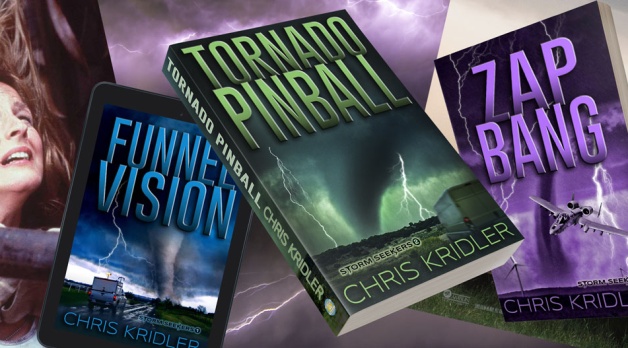
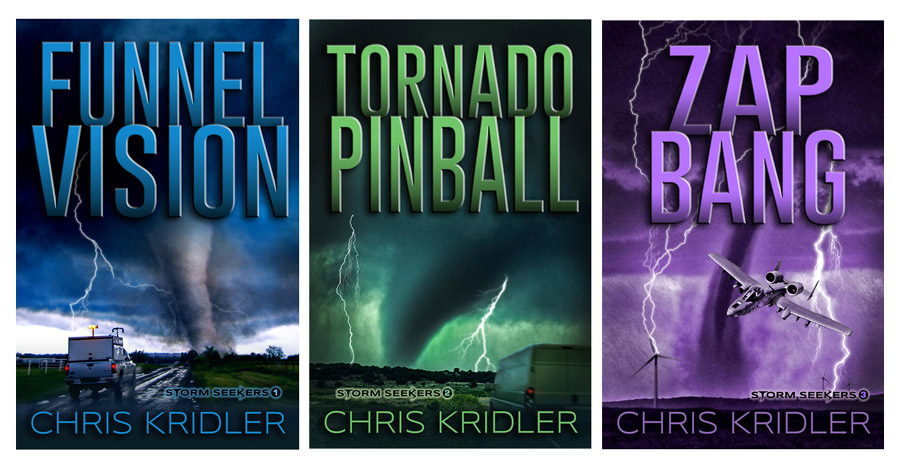
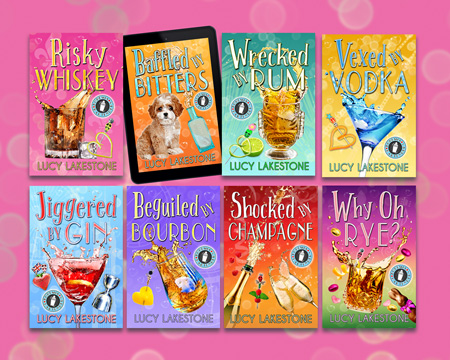

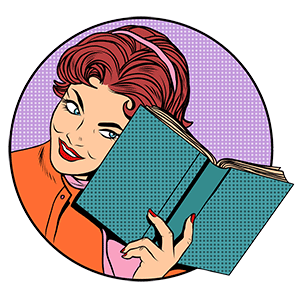
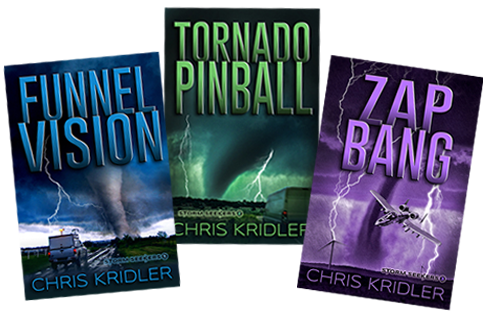
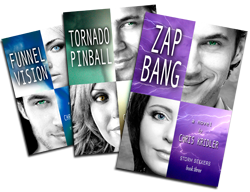
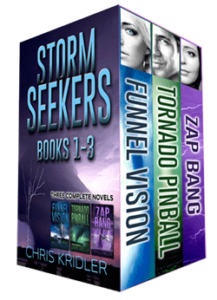

 When I’m done writing a book, I give it a first read to make sure it has all the basics. Usually I feel pretty good after that read. I’m like, hey, I’ve written a book! And it doesn’t suck! By the second read, I’m grimacing and slashing my way through it. Its faults become manifest. And there are multiple reads after that, or as most writers call them, revisions.
When I’m done writing a book, I give it a first read to make sure it has all the basics. Usually I feel pretty good after that read. I’m like, hey, I’ve written a book! And it doesn’t suck! By the second read, I’m grimacing and slashing my way through it. Its faults become manifest. And there are multiple reads after that, or as most writers call them, revisions.

